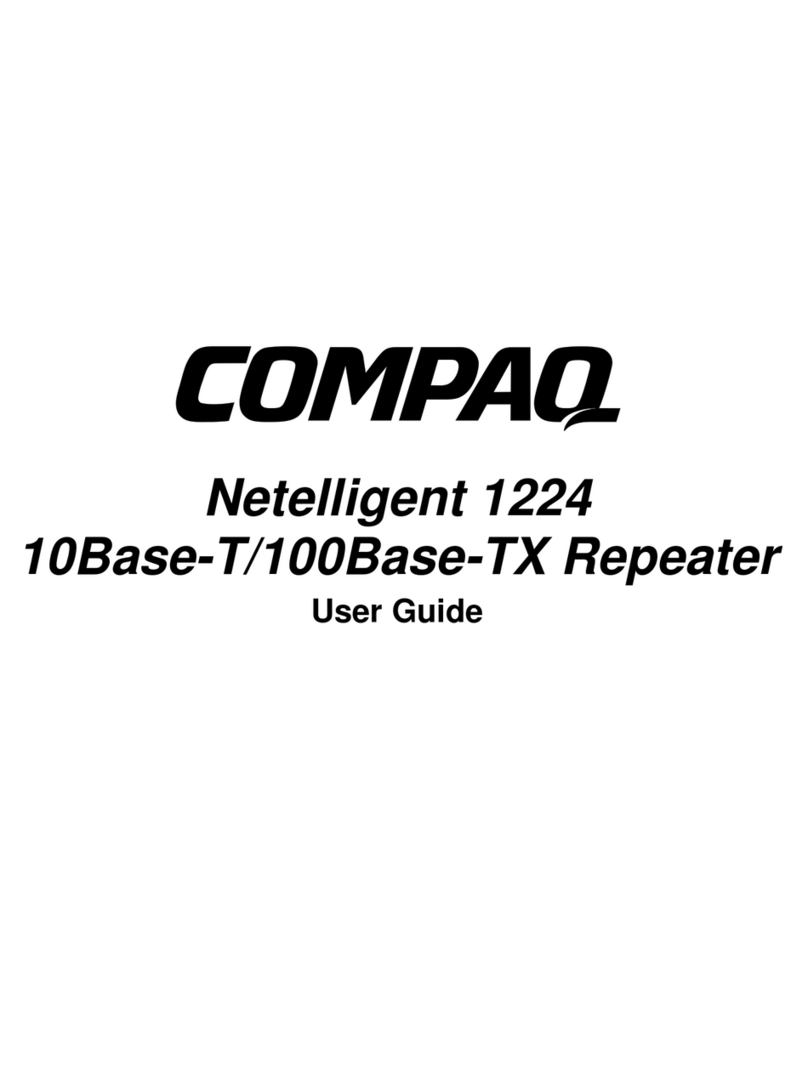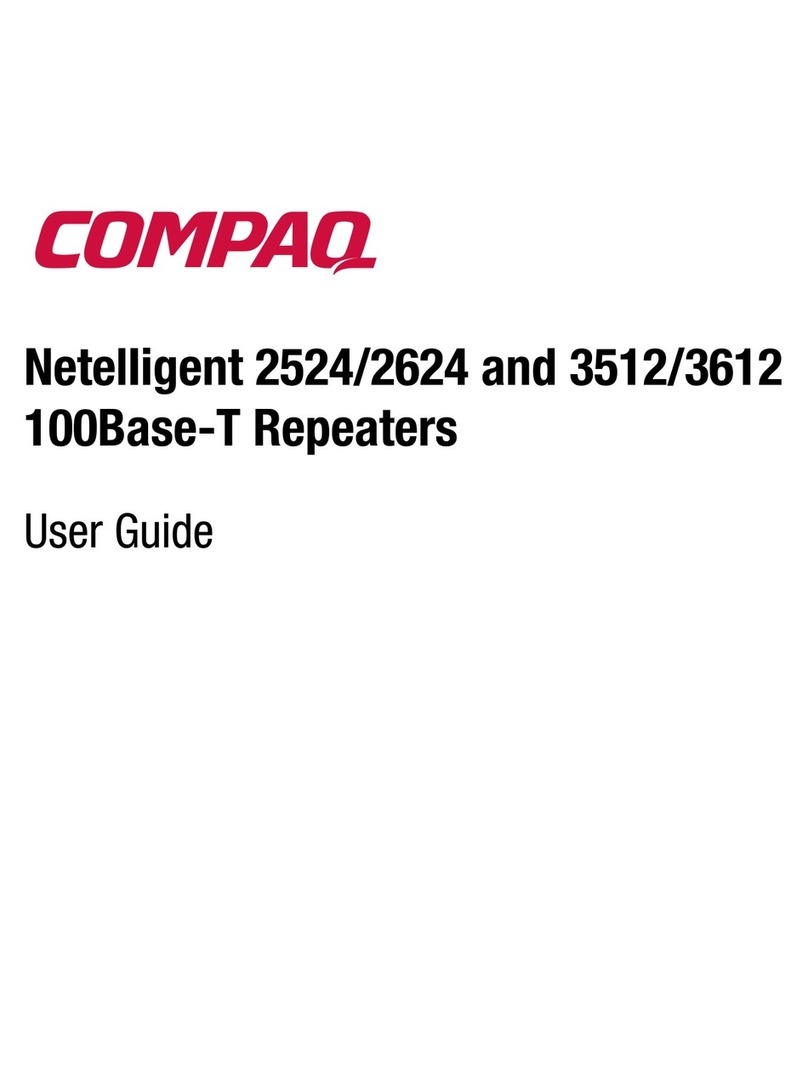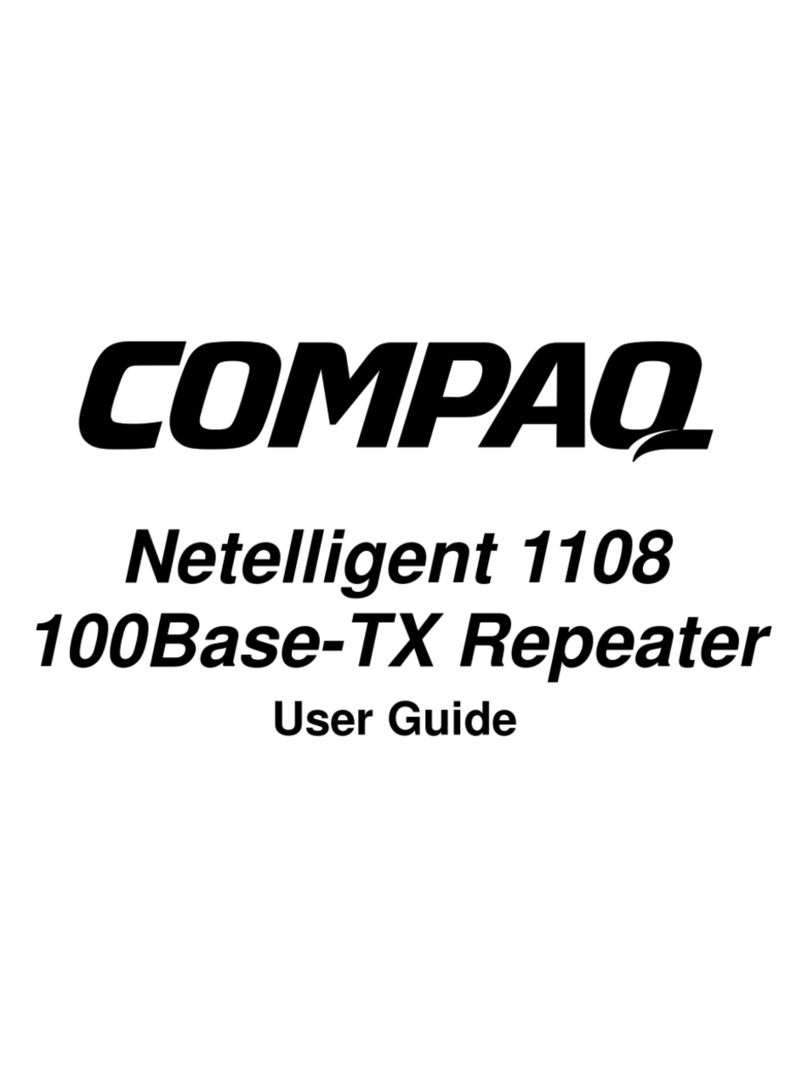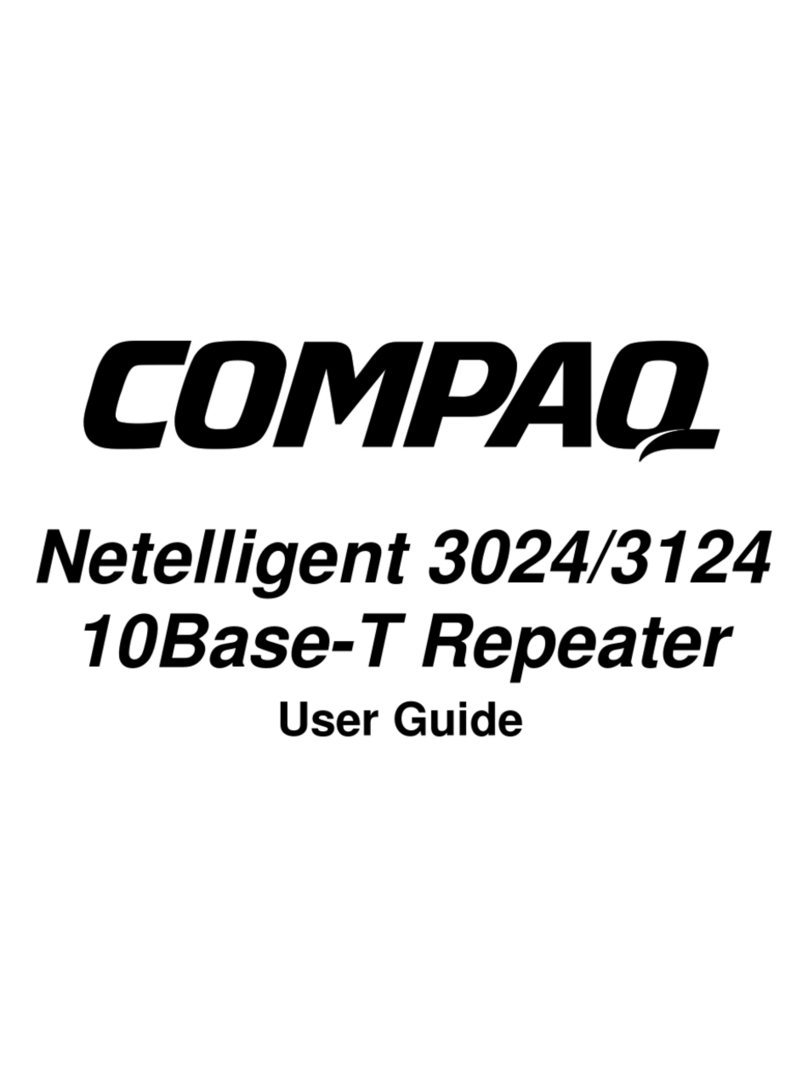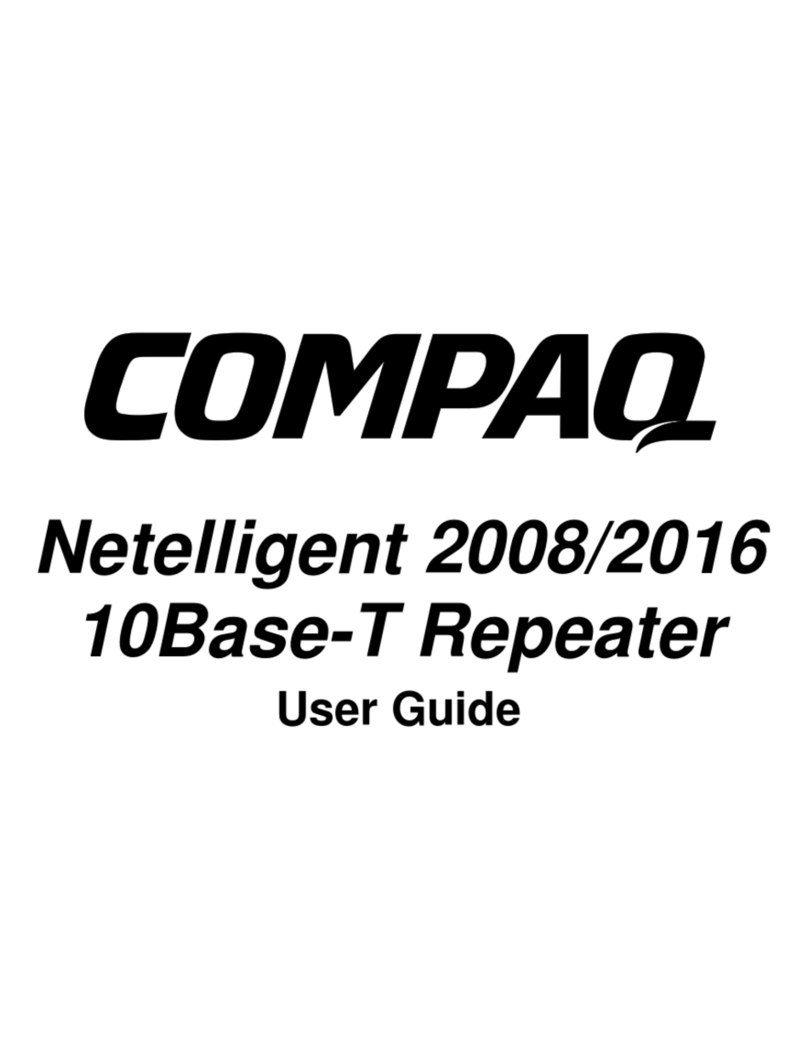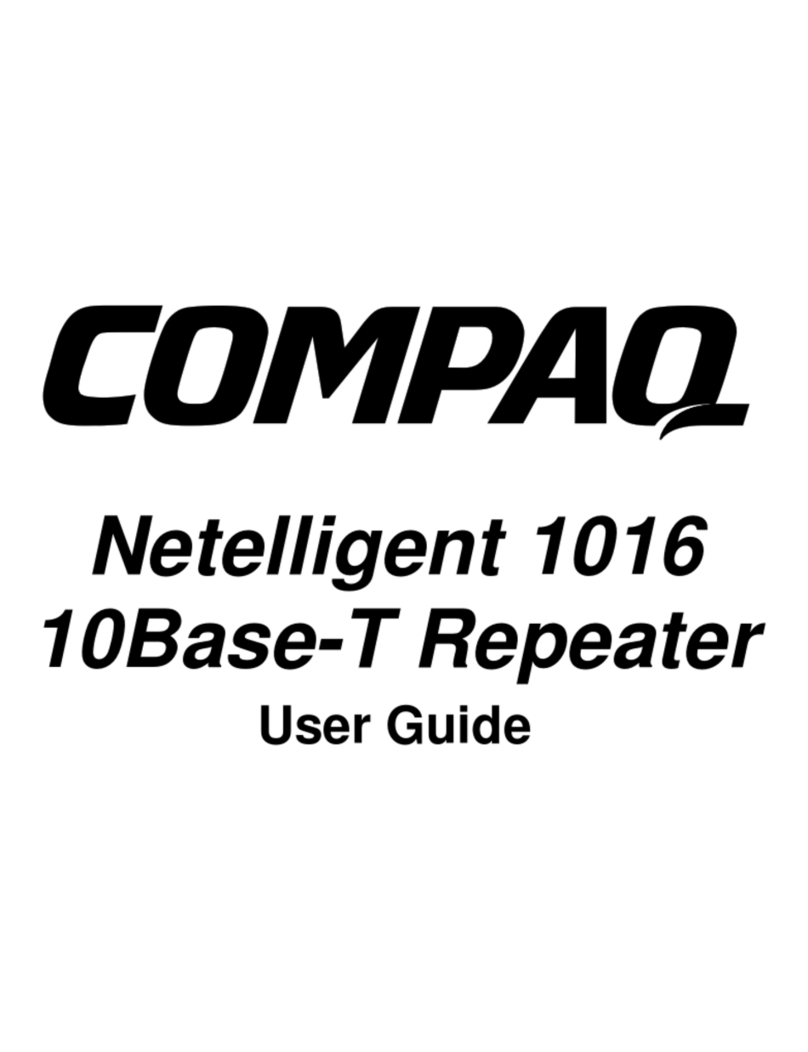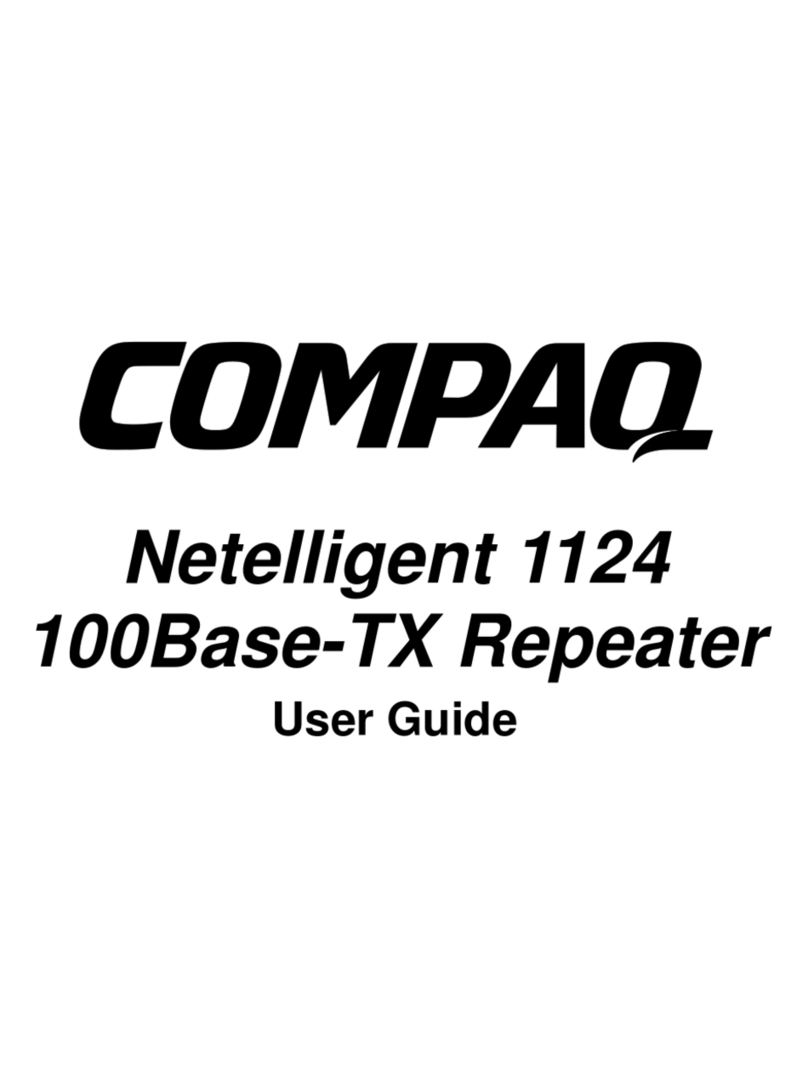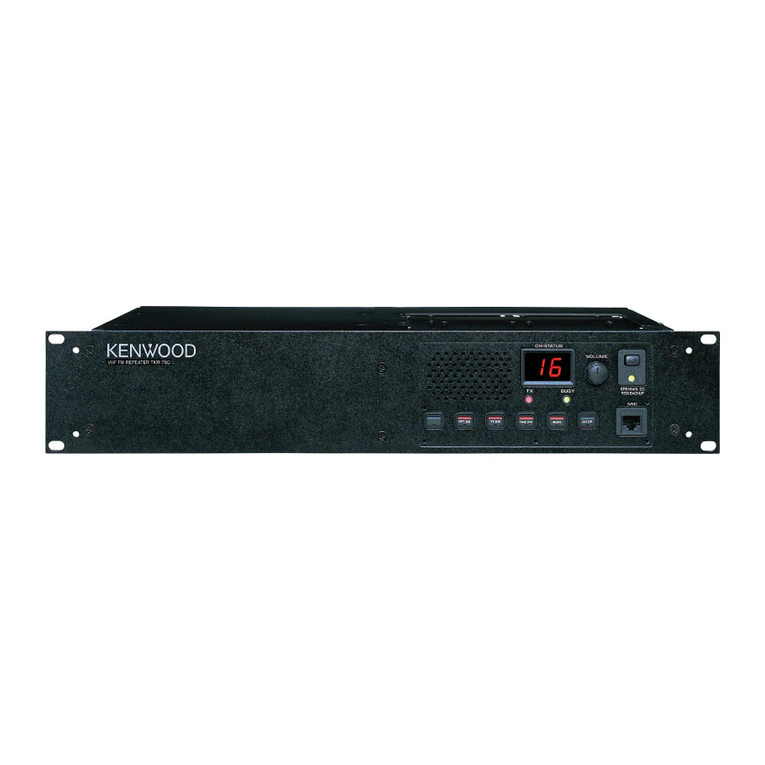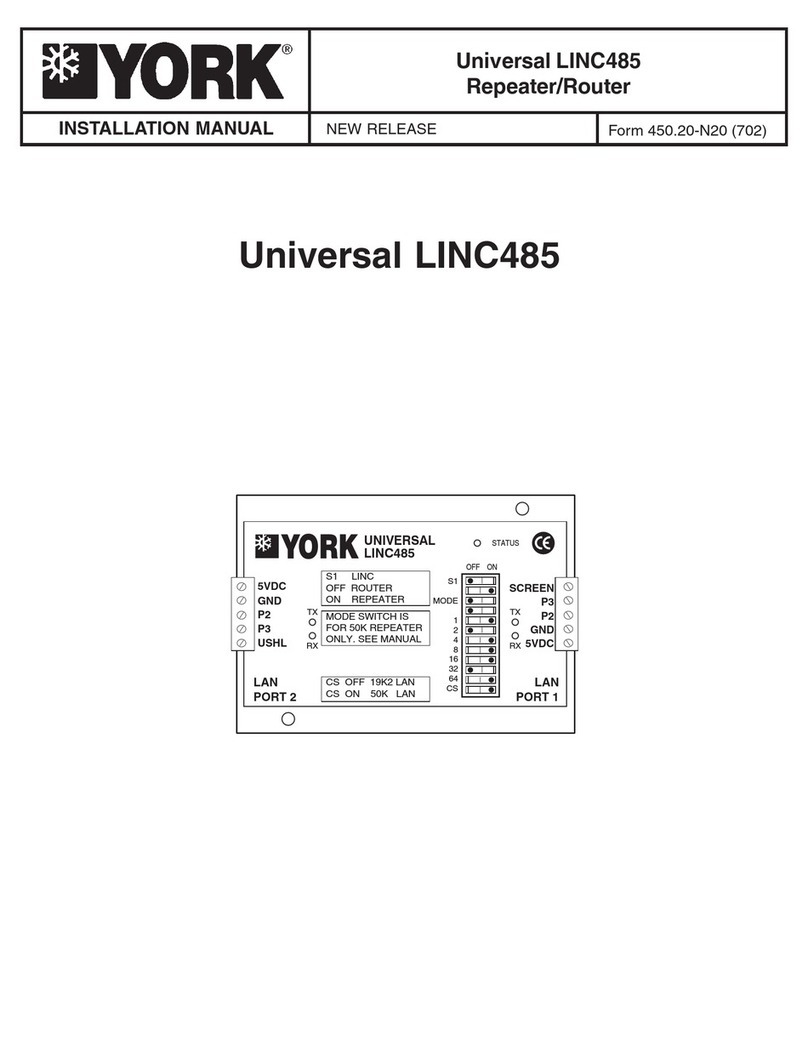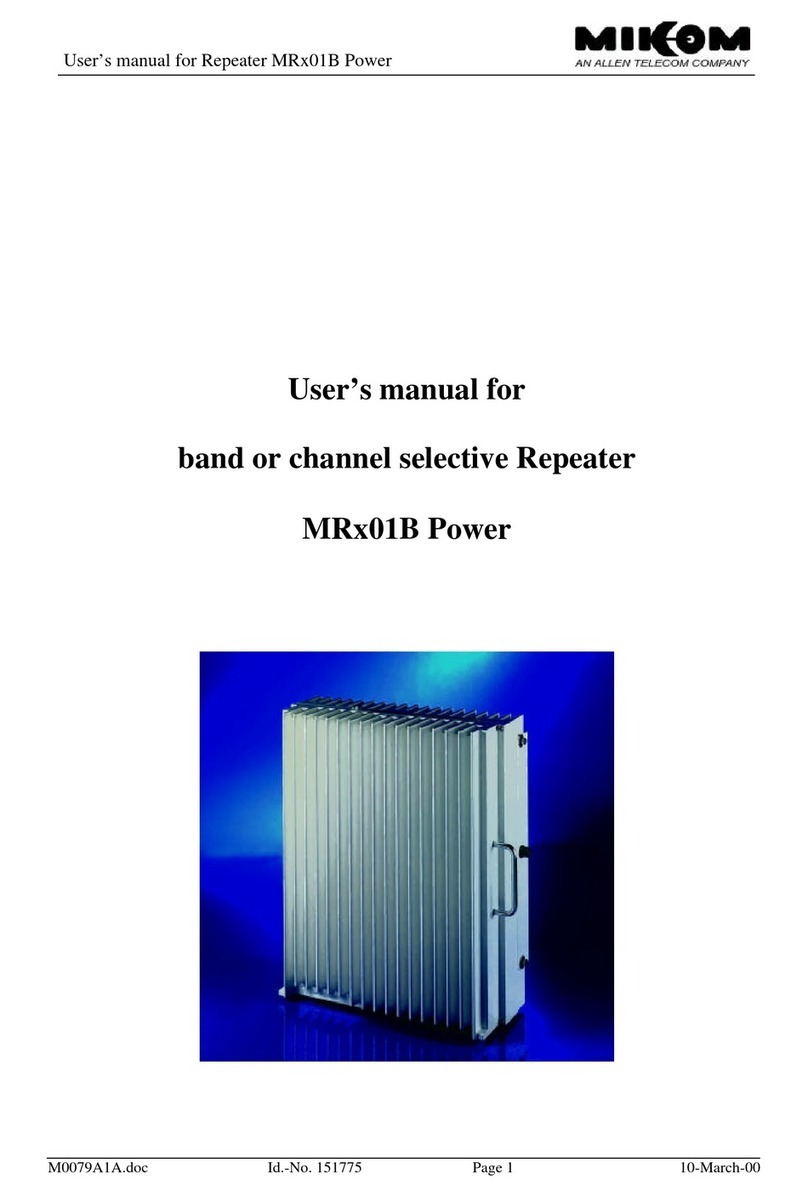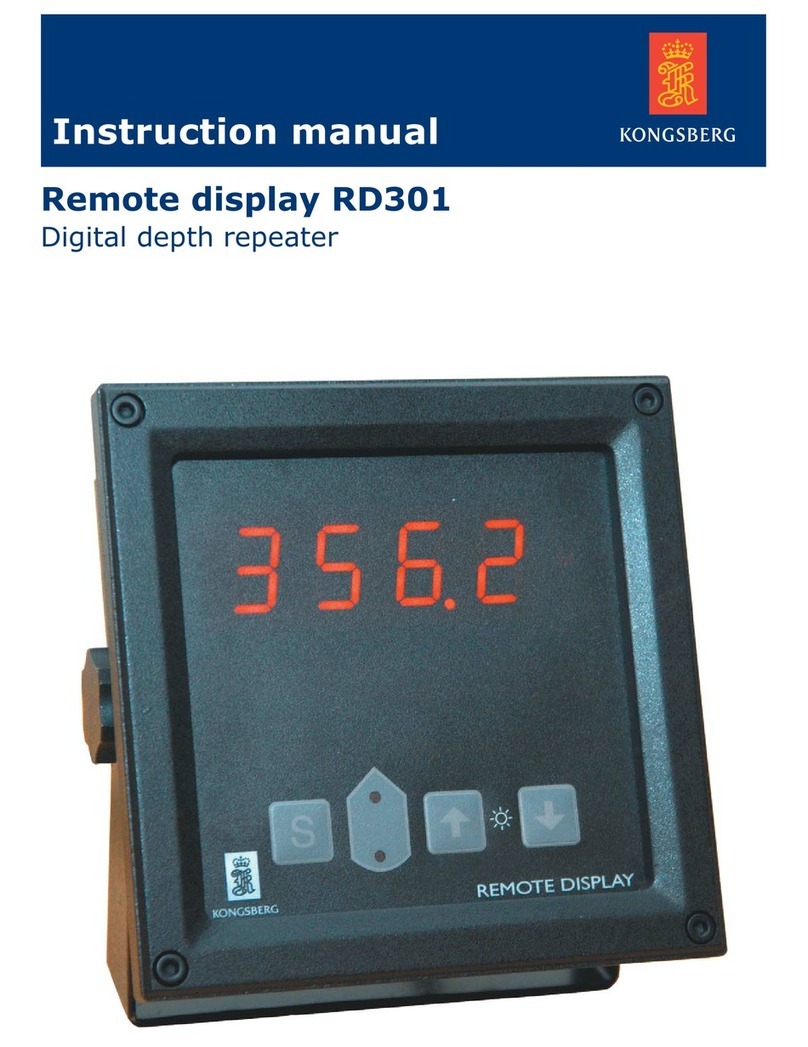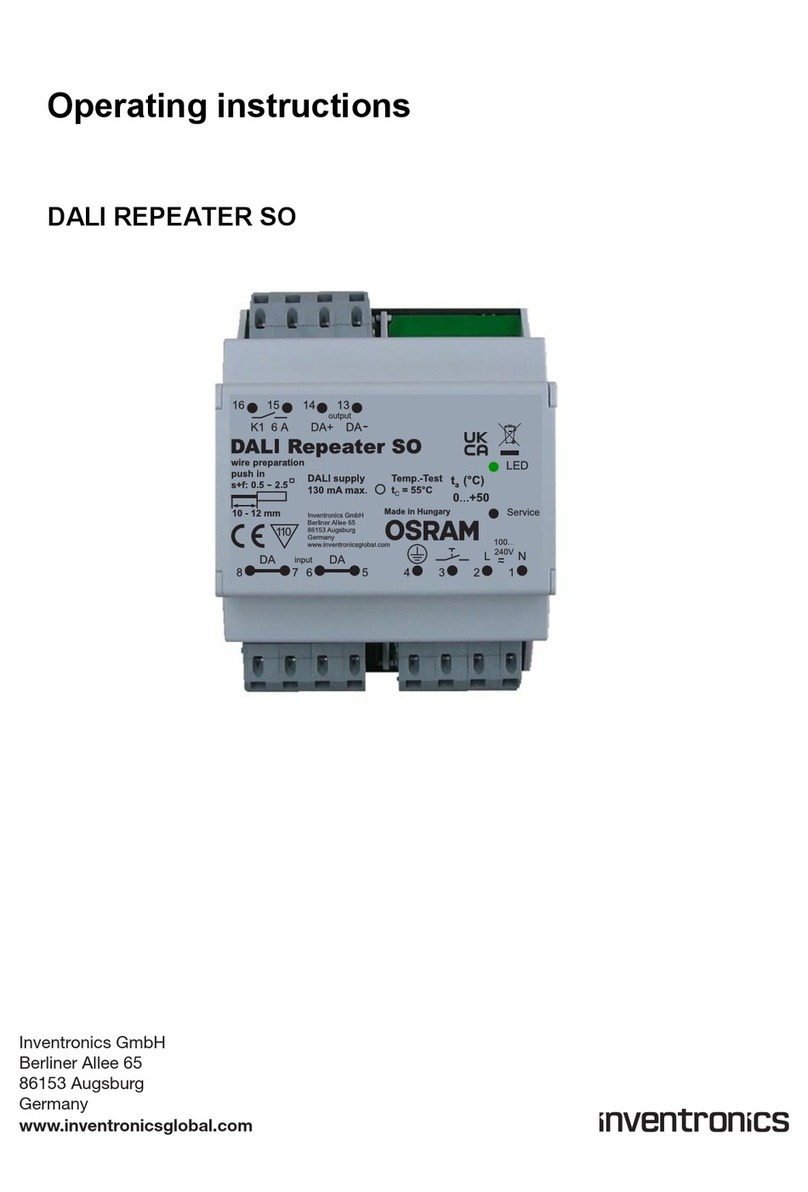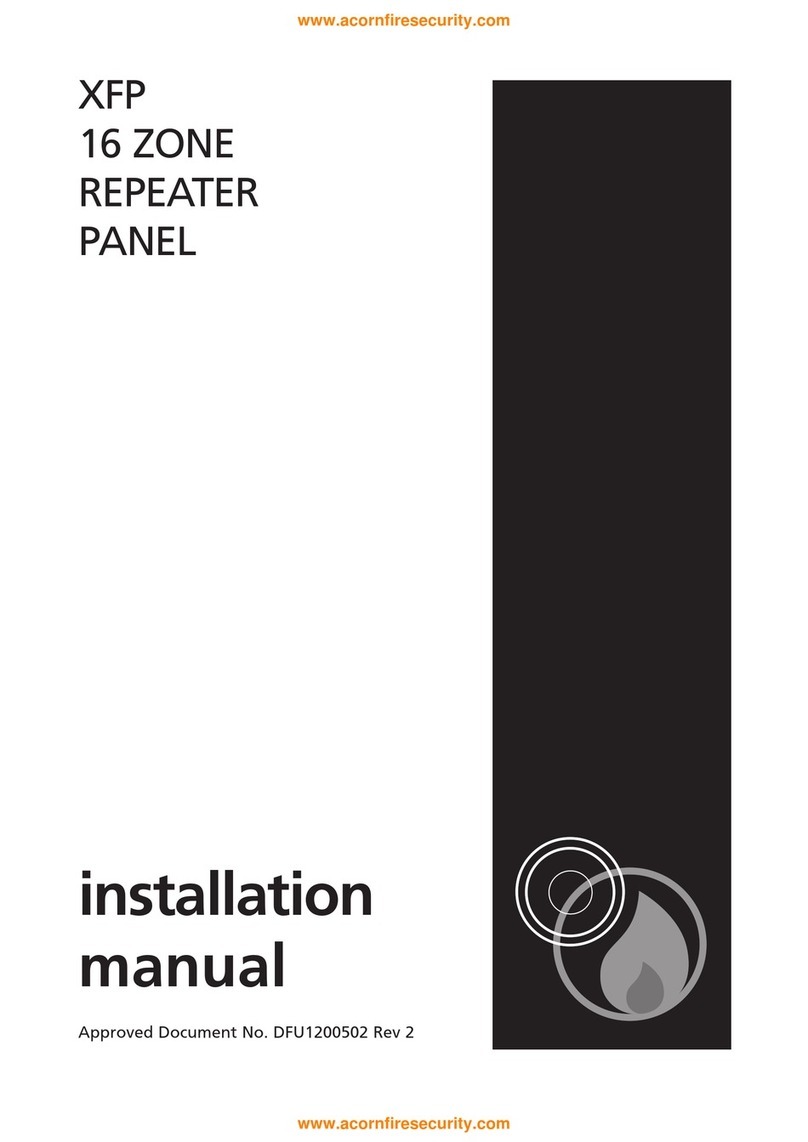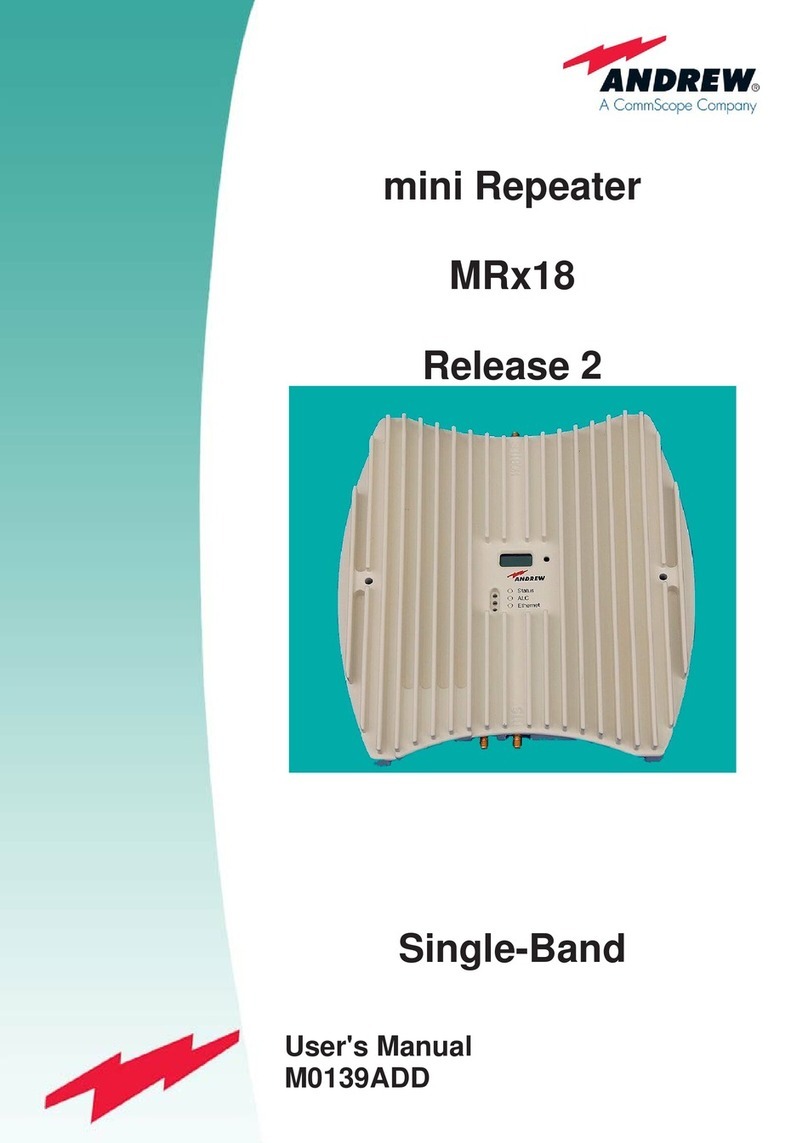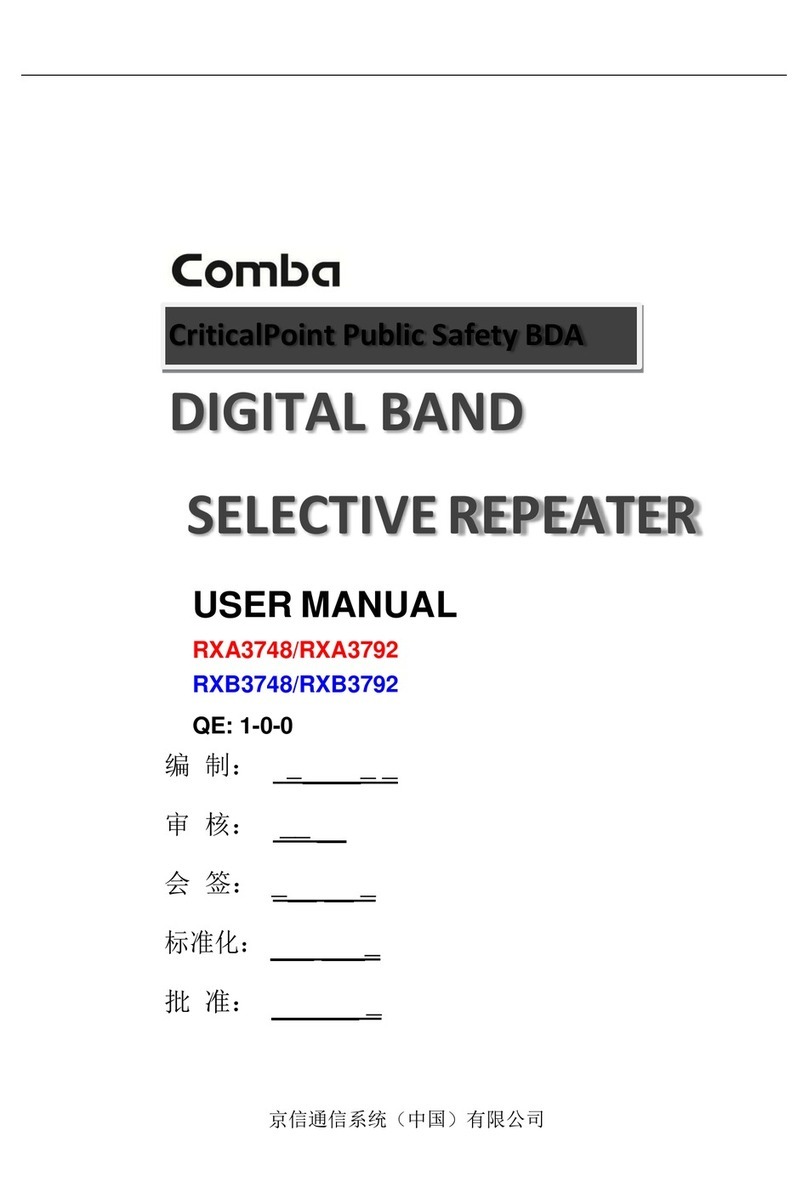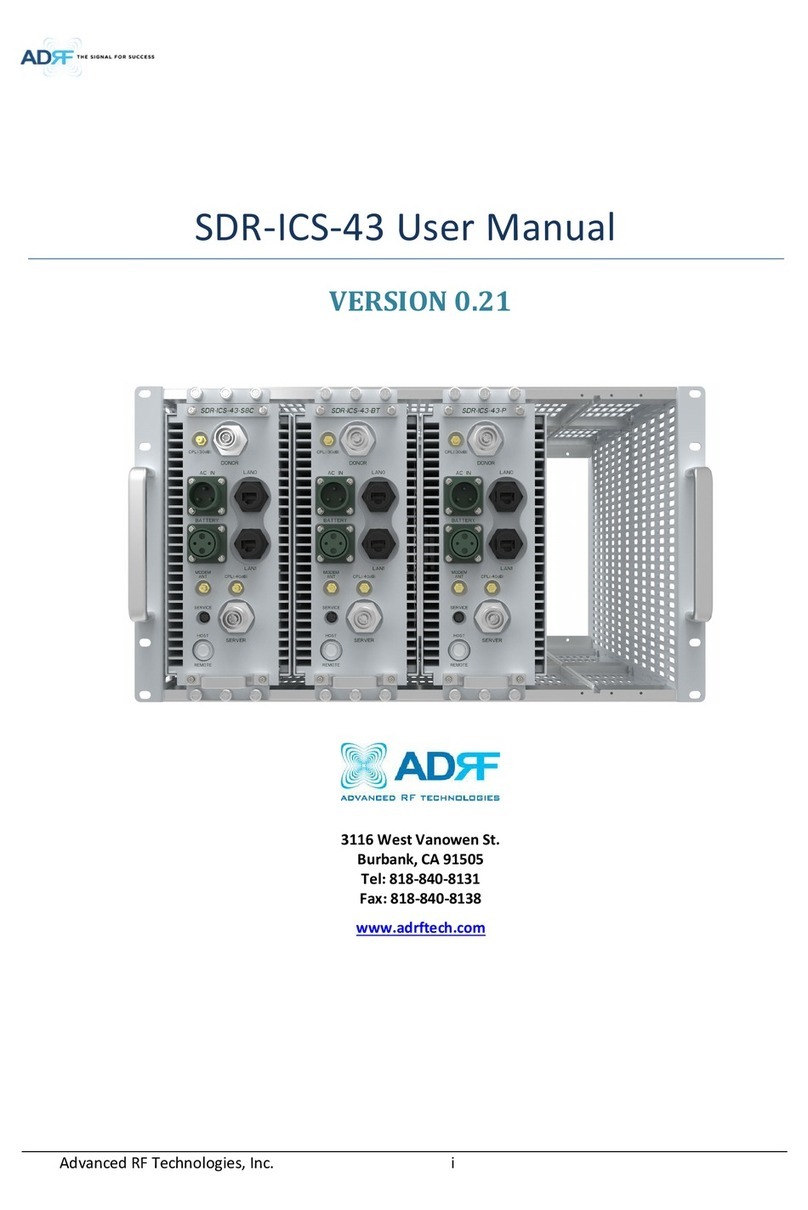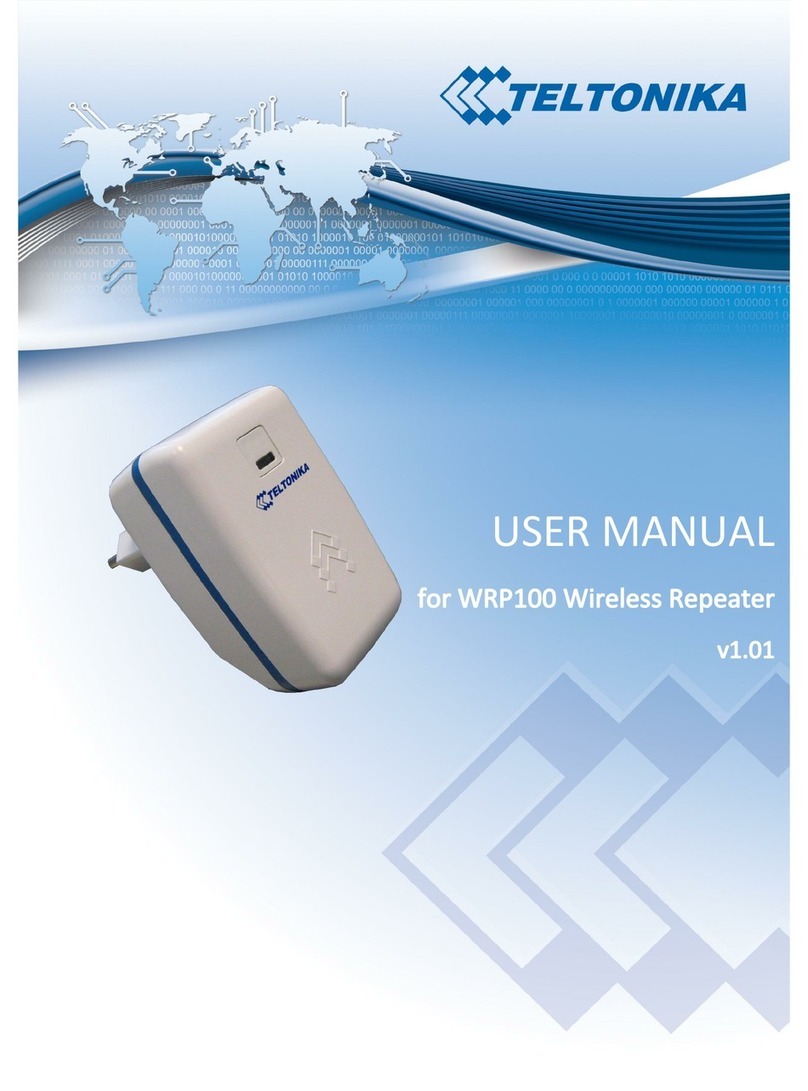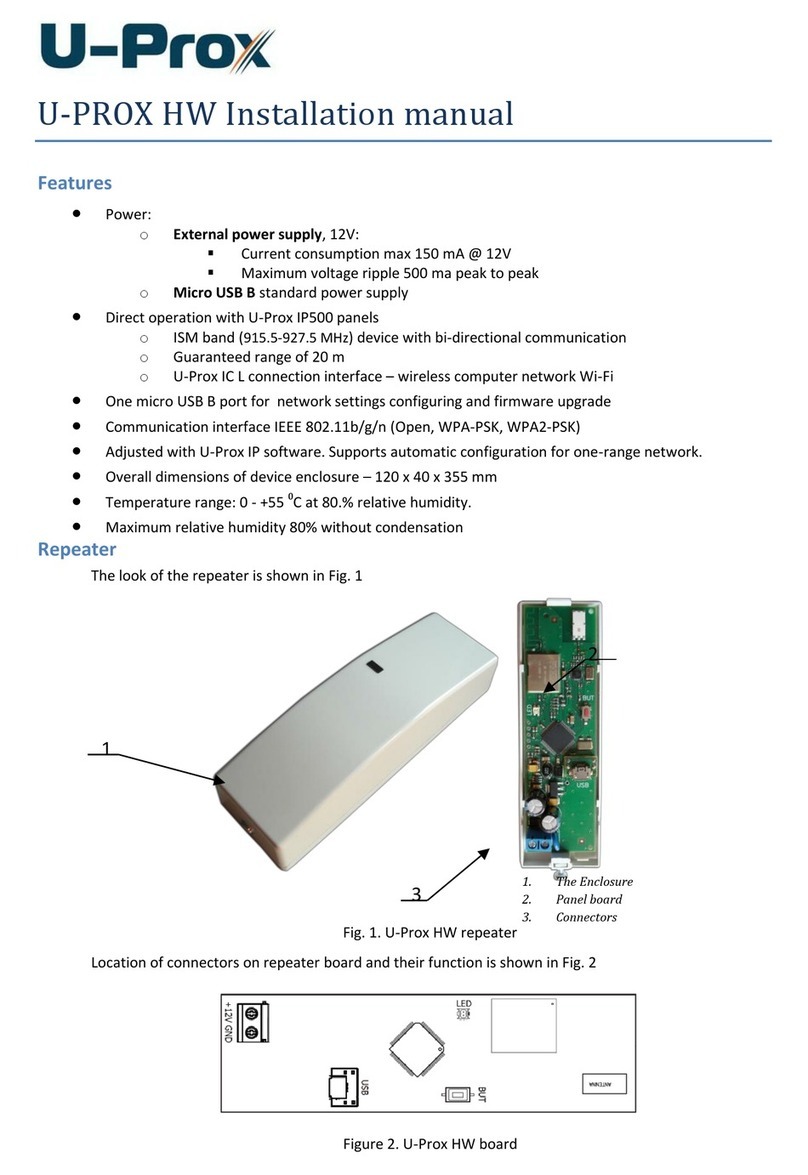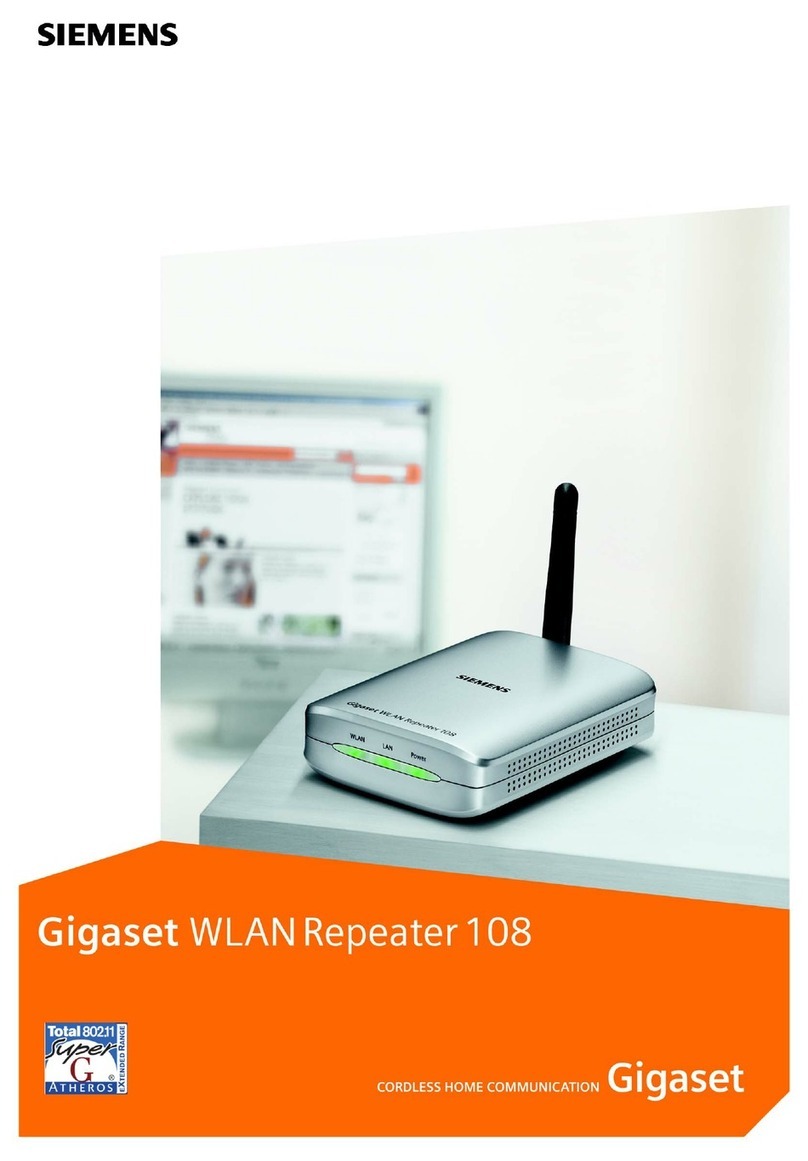. . . . . . . . . . . . . . . . . . . .
v
Compaq Netelligent 1008/1009 10Base-T Unmanaged Repeaters User Guide
Writer:
Liz Fischer
Project:
High Speed Switch Ports
Comments:
268750-001
File Name:
750note2.doc
Last Saved On:
6/25/96 5:44 PM
Federal Communications Commission Notice
Part 15 of the Federal Communications Commission (FCC) Rules and Regulations has
established Radio Frequency (RF) emission limits to provide an interference-free radio
frequency spectrum. Many electronic devices, including computers, generate RF energy
incidental to their intended function and are, therefore, covered by these rules. These
rules place computers and related peripheral devices into two classes, A and B,
depending upon their intended installation. Class A devices are those that may
reasonably be expected to be installed in a business or commercial environment. Class B
devices are those that may reasonably be expected to be installed in a residential
environment (i.e., personal computers). The FCC requires devices in both classes to bear
a label indicating the interference potential of the device as well as additional operating
instructions for the user.
The rating label on the device shows which class (A or B) the equipment falls into. Class
B devices have an FCC ID on the label. Class A devices do not have an FCC ID on the
label. Once the class of the device is determined, refer to the following corresponding
statement.
NOTE:
If this equipment contains a Token Ring interface, this equipment is a Class A digital
device when the Token Ring interface is utilized.
Class A Equipment
This equipment has been tested and found to comply with the limits for a Class A digital
device, pursuant to Part 15 of the FCC Rules. These limits are designed to provide
reasonable protection against harmful interference when the equipment is operated in a
commercial environment. This equipment generates, uses, and can radiate radio
frequency energy and, if not installed and used in accordance with the instructions, may
cause harmful interference to radio communications. Operation of this equipment in a
residential area is likely to cause harmful interference, in which case the user will be
required to correct the interference at personal expense.
